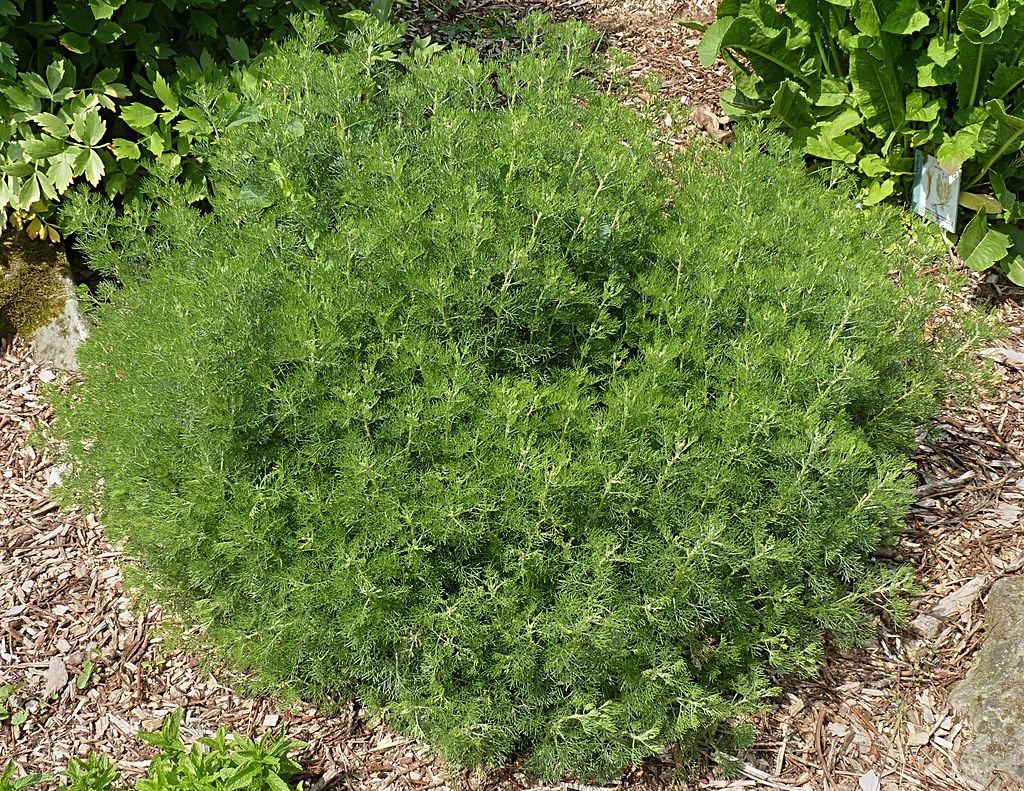
Also known as Old Man, Lad’s Love and Maiden’s Ruin, this bushy evergreen sub-shrub is native to southern Europe, Africa, and parts of Asia, and is a member of the aster family, Asteraceae, that also includes sunflowers, daisies, and lettuce. Southernwood has been used medicinally since ancient times. The Greek physician and pharmacologist who traveled with the emperor Nero, tells us that the plant can be used to treat a variety of ills including difficulty breathing, ruptures, spasms, hip ailments, eye inflammation, delayed menstruation, difficult urination, and the bites of spider and scorpion. In addition it can be used a fumigant and deters snakes. Evidence for the presence of southernwood in ancient Pompeii includes the depiction of the plant in a wall painting in the House of Venus Marina and preserved pollen in the garden soil of ancient Pompeii. Photo Credit Jamain Wikimedia Commons.
Southernwood has erect branching stems and finely divided gray-green leaves that are 1.5 to 2.5 inches long and have a pungent camphor fragrance. The small dull yellow nodding flowers are carried in loose panicles and appear in the late summer but are not ornamentally interesting. Southernwood has a long history of use in medicine and cooking, and as a strewing herb and insect repellent. In more modern times it is grown for it attractive appearance and the fragrance of its foliage so is suitable for both the herb garden and perennial border. It is especially nice when planted near a bench or path where the foliage can be touched to give off its fragrance. Southernwood tolerates drought, poor soil, and hard pruning but not humidity. Thriving in full sun and dry sandy soil, it can tolerate some shade but will die in damp shade.
Size: 3-4’ H x 3-4’ W
Light: Full sun but tolerates light shade
Soil: Sandy, dry, well-drained; tolerates infertile soil.
Hardiness: Zones 5-8